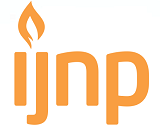Enhancing Diabetic Foot Ulcer Healing: The Role of Channa striata Extract Nutrition in Accelerating Inflammatory, Proliferative, and Maturation Phases
DOI:
https://doi.org/10.18196/ijnp.v8i2.20740Keywords:
Albumin, Channa striata, diabetic foot ulcers, wound healing phasesAbstract
Background: Diabetic foot ulcers pose a severe complication for individuals with diabetes mellitus, necessitating effective therapeutic support such as albumin nutrition throughout the wound healing process. Derived from Channa striata, a commonly consumed source of albumin in Indonesia, this extract can potentially expedite wound healing.
Objective: This study aims to evaluate the efficacy of Channa striata extract nutrition in accelerating the inflammatory, proliferative, and maturation phases of diabetic foot ulcer healing.
Methods: This quantitative study employed a pra-experimental design using a single-group pretest-posttest approach. The study involved 30 diabetic patients who were administered a daily dose of 550 grams of Channa striata extract over four weeks. The Bates Jensen Assessment Tool (BWAT) assessed wound progress.
Results: Results revealed that the average participant age was 60.2 years, with an average diabetic history of seven years. The average wound duration was 8.7 weeks; 66.7% of the participants were female; 70% had Non-Insulin Dependent Diabetes Mellitus (NIDDM); and 56.7% were at stage IV. The study found a significant difference in BWAT scores before and after the administration of Channa striata extract in diabetic foot ulcer patients.
Conclusion: This study supports the effectiveness of Channa striata extract as an adjunct therapy in expediting the wound-healing phases in diabetic foot ulcers.
References
Alejandra Aguayo-Becerra, O., Torres-Garibay, C., Dassaejv Macías-Amezcua, M., Fuentes-Orozco, C., de Guadalupe Chávez-Tostado, M., Andalón-Dueñas, E., Espinosa Partida, A., Álvarez-Villaseñor, A. del S., Cortés-Flores, A. O., & González-Ojeda, A. (2013). Serum albumin level as a risk factor for mortality in burn patients. Clinics, 68(7), 940–945. https://doi.org/10.6061/clinics/2013(07)09
Apriasari, M. L., Puspitasari, D., & Utami, J. P. (2022). Anti-Inflammatory Effect of Channa micropeltes Extract in Angiogenesis of Diabetes Mellitus Wound Healing. Review of Diabetic Studies, 18(4), 166–170. https://doi.org/10.1900/RDS.2022.18.166
Crowley, B., Drovandi, A., Seng, L., Fernando, M. E., Ross, D., & Golledge, J. (2023). Patient Perspectives on the Burden and Prevention of Diabetes-Related Foot Disease. Science of Diabetes Self-Management and Care. https://doi.org/10.1177/26350106231170531
Dewita, D., Sidauruk, S. W., & Desmelati, D. (2022). Amino Acid and Mineral Profiles of Fresh Snakehead ( Channa striata) Meat to Potential as an Immune System. IOP Conference Series: Earth and Environmental Science, 1118(1). https://doi.org/10.1088/1755-1315/1118/1/012034
Everett, E., & Mathioudakis, N. (2018). Update on management of diabetic foot ulcers. Annals of the New York Academy of Sciences, 1411(1), 153–165. https://doi.org/10.1111/nyas.13569
International Diabetes Federation. (2022). IDF Atlas Reports 2022: Diabetes foot-related complications. Idf. www.diabetesatlas.org
Izzaty, A., Dewi, N., & Pratiwi, D. I. N. (2014). Ekstrakharuan(Channa striata)secara efektif menurunkan jumlah limfosit fase inflamasi dalam penyembuhan luka (Extract of haruan (Channa striata) decreases lymphocyte count in inflammatory phase of wound healing process effectively). Journal of Dentomaxillofacial Science, 13(3), 176. https://doi.org/10.15562/jdmfs.v13i3.411
Nurilmala, M., Safithri, M., Pradita, F. T., & Pertiwi, R. M. (2021). Profil Protein Ikan Gabus (Channa striata), Toman (Channa micropeltes), dan Betutu (Oxyeleotris marmorata). Jurnal Pengolahan Hasil Perikanan Indonesia, 23(3), 548–557. https://doi.org/10.17844/jphpi.v23i3.33924
Permana, S. A., Hartono, H., Purwanto, B., & Indarto, D. (2023). Non-inferiority trial of Channa striata extract on endothelial glycocalyx layer protection in septic patients. Anaesthesia, Pain and Intensive Care, 27(4), 523–527. https://doi.org/10.35975/apic.v27i2.2278
Safitri, A. I., Saidah, Q., & Nurhayati, C. (2022). Literatur Review; Pengaruh Pemberian Olahan Ikan Gabus Terhadap Proses Penyembuhan Luka DM. Jurnal Ilmiah Keperawatan Stikes Hang Tuah Surbaya, 17(1), 55–56. https://doi.org/10.30643/jiksht.v17i1.169
Siswanto, A., Dewi, N., & Hayatie, L. (2016). Effect of haruan (channa striata) extract on fibroblast cells count in wound healing. Journal of Dentomaxillofacial Science, 1(2), 89. https://doi.org/10.15562/jdmfs.v1i2.3
Sita Udayanti, & Rini Noviyani. (2023). Pemanfaatan Ekstrak Ikan Gabus (Channa striata) untuk Penyembuh Luka pada Pasien Diabetes Mellitus (Ulkus Diabetikum). Prosiding Workshop Dan Seminar Nasional Farmasi, 1, 50–61. https://doi.org/10.24843/wsnf.2022.v01.i01.p05
Soniya, F., & Fauziah, M. (2020). Efektivitas Ekstrak Ikan Gabus sebagai Antihiperglikemik. Jurnal Penelitian Perawat Profesional, 2(1), 65–70. https://doi.org/10.37287/jppp.v2i1.45
Tai, C.-H., Hsieh, T.-C., Lee, R.-P., & Lo, S.-F. (2021). Prevalence and Medical Resource of Patients with Diabetic Foot Ulcer: A Nationwide Population-Based Retrospective Cohort Study for 2001–2015 in Taiwan. International Journal of Environmental Research and Public Health, 18(4), 1891. https://doi.org/10.3390/ijerph18041891
Tan, S. T., & Dosan, R. (2019). Lessons From Epithelialization: The Reason Behind Moist Wound Environment. The Open Dermatology Journal, 13(1), 34–40. https://doi.org/10.2174/1874372201913010034
Tungadi, R. (2020). Potensi Ikan Gabus (Ophiocephalus Striatus) Dalam Mempercepat Penyembuhan Luka. Jambura Fish Processing Journal, 1(1), 46–55. https://doi.org/10.37905/jfpj.v1i1.4505
Vahwere, B. M., Ssebuufu, R., Namatovu, A., Kyamanywa, P., Ntulume, I., Mugwano, I., Pius, T., Sikakulya, F. K., Xaviour, O. F., Mulumba, Y., Jorge, S., Agaba, G., & Nasinyama, G. W. (2023). Factors associated with severity and anatomical distribution of diabetic foot ulcer in Uganda: a multicenter cross-sectional study. BMC Public Health, 23(1), 1–14. https://doi.org/10.1186/s12889-023-15383-7
Yuliana, B., Sartini, Djide, N., & Djabir, Y. Y. (2022). Wound healing effect of snakehead fish (Channa striata) mucus containing transdermal patch Journal of Applied Pharmaceutical Science. 12(7), 171–183. https://doi.org/10.7324/JAPS.2022.120717
Downloads
Additional Files
- Enhancing Diabetic Foot Ulcer Healing: The Role of Channa striata Extract Nutrition in Accelerating Inflammatory, Proliferative, and Maturation Phases
- Enhancing Diabetic Foot Ulcer Healing: The Role of Channa striata Extract Nutrition in Accelerating Inflammatory, Proliferative, and Maturation Phases
- Enhancing Diabetic Foot Ulcer Healing: The Role of Channa striata Extract Nutrition in Accelerating Inflammatory, Proliferative, and Maturation Phases
Published
Issue
Section
License
License
Articles published in the IJNP (Indonesian Journal of Nursing Practices) are licensed under a Attribution 4.0 International (CC BY 4.0) license. You are free to:
- Share — copy and redistribute the material in any medium or format.
- Adapt — remix, transform, and build upon the material for any purpose, even commercially.
This license is acceptable for Free Cultural Works. The licensor cannot revoke these freedoms as long as you follow the license terms. Under the following terms:
Attribution — You must give appropriate credit, provide a link to the license, and indicate if changes were made. You may do so in any reasonable manner, but not in any way that suggests the licensor endorses you or your use.
- No additional restrictions — You may not apply legal terms or technological measures that legally restrict others from doing anything the license permits.
Copyright
Authors who publish with IJNP (Indonesian Journal of Nursing Practices) agree to the following terms:
- Authors retain copyright and grant IJNP (Indonesian Journal of Nursing Practices) the right of first publication with the work simultaneously licensed under an Attribution 4.0 International (CC BY 4.0) that allows others to remix, adapt and build upon the work with an acknowledgment of the work's authorship and of the initial publication in IJNP (Indonesian Journal of Nursing Practices).
- Authors are permitted to copy and redistribute the journal's published version of the work (e.g., post it to an institutional repository or publish it in a book), with an acknowledgment of its initial publication in IJNP (Indonesian Journal of Nursing Practices).














